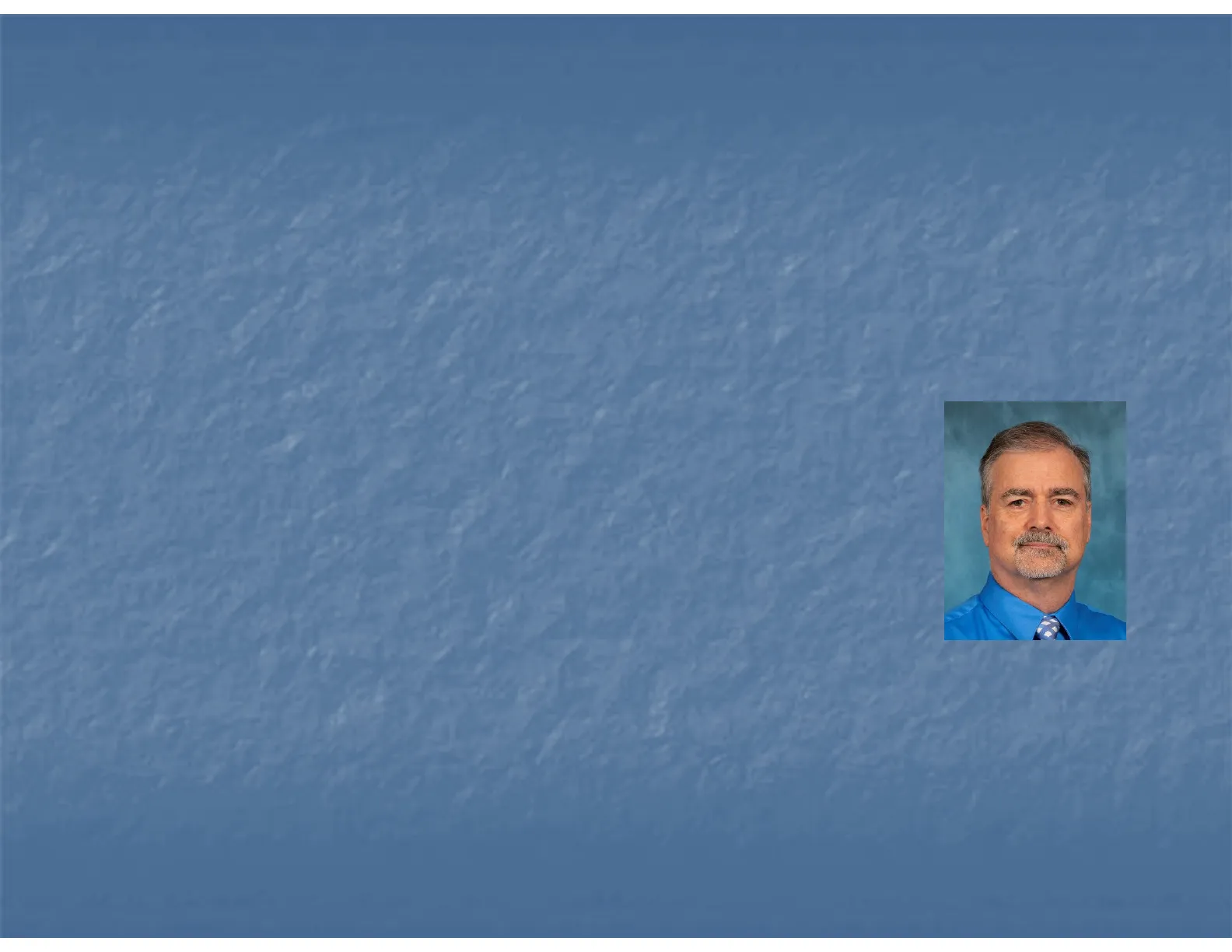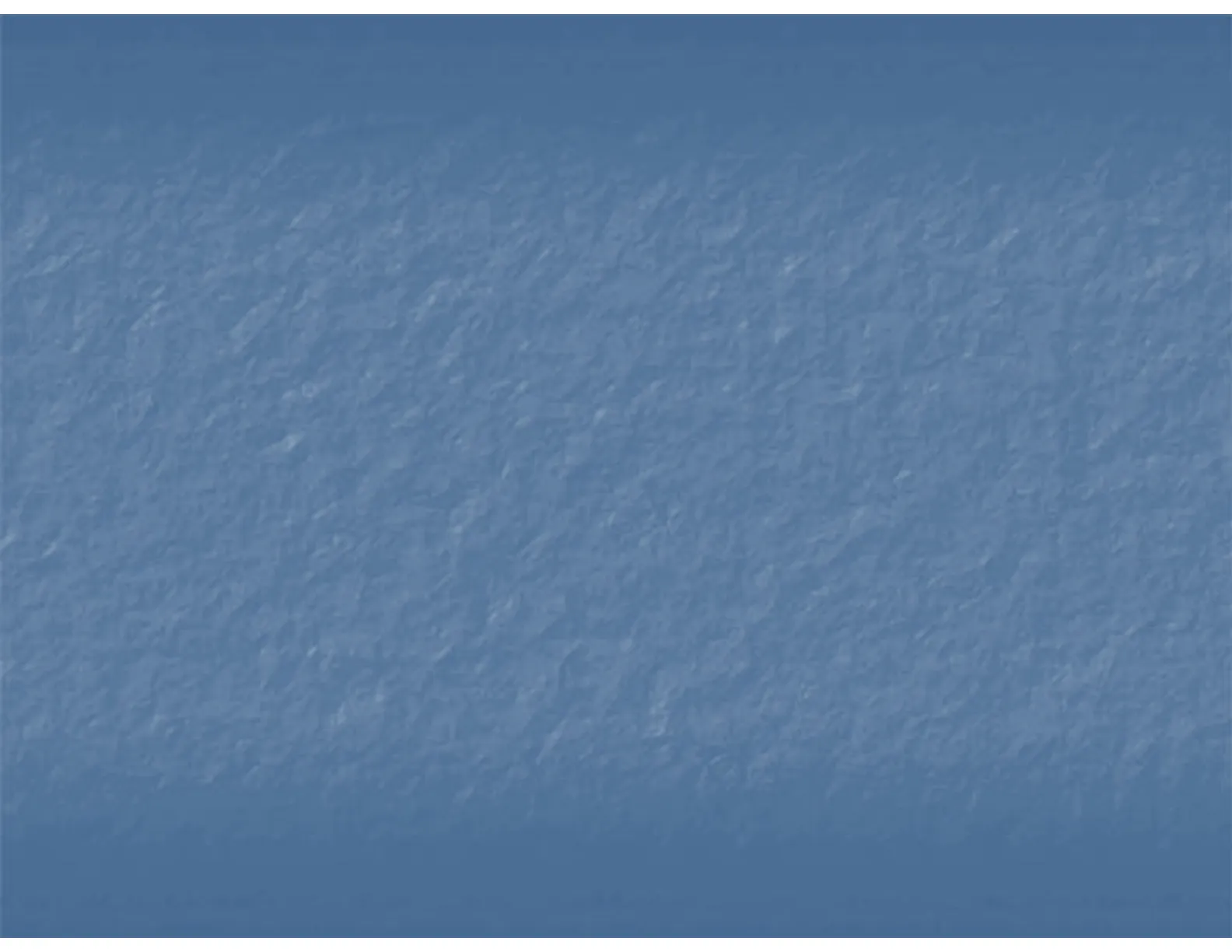CNS Organization: Brain Structures and Anatomy Overview
Slides from Midwestern University about CNS Organization. The Pdf provides an overview of the central nervous system, focusing on brain structures like the telencephalon, diencephalon, brainstem, and cerebellum. This University Biology material is designed for educational purposes, offering a foundational understanding of brain anatomy.
Mostra di più45 pagine


Visualizza gratis il Pdf completo
Registrati per accedere all’intero documento e trasformarlo con l’AI.
Anteprima
CNS Organization and Course Information
CNS ORGANIZATION Dr. Paul McCulloch PHYSD 1524 6/24/25 @ Midwestern University 2025 C Paul McCulloch 2025Dr. Paul McCulloch Dept of Physiology pmccul@midwestern.edu
- Maisoon (630-515-6387) mahmad@midwestern.edu
- PowerPoint CNS ORGANIZATION Dr. Paul McCulloch PHYSD 1524 6/24/25 @ Midwestern University 2025 @ Paul McCulloch 2025
Practice Quiz and Lecture Notes
- Practice Quiz
- Canvas
- Lecture Notes Dr. P. McCulloch Summer, 2025 CNS ORGANIZATION Lecture #8
Learning Objectives for Nervous System
LEARNING OBJECTIVES:
- Know the functional divisions of the nervous system.
- Know the difference between afferent, efferent, and interneurons. Be able to define the following: ganglia, nuclei, nerve, nerve fiber.
- Know the structural and functional differences between gray matter and white matter.
- Know the structure and function of the major components of the spinal cord. Know the structure and function of the major components of the brain.
Central and Peripheral Nervous Systems Overview
CENTRAL AND PERIPHERAL NERVOUS SYSTEMS A. Overall organization of the nervous system Central Brain Nervous Cord System Output firm ONS Peripheral Efferent division division System Viscera Somatik Nervous Nervous System Sonoeth Cadas Glands Effector Organe (maio vụ ọt muscle and gland Sinsom)
- Central Nervous System (CNS) - Consists of the brain and spinal cord.
- Peripheral Nervous System (PNS) - Consists of all neural tissue outside of the central nervous system. It consists primarily of peripheral nerves and cell bodies in the dorsal root ganglia. @ Midwestern University 2025 @ Paul McCulloch 2025
Sample Questions and Nervous System Divisions
4. Sample Questions Spin Afferent NervousI. CENTRAL AND PERIPHERAL NERVOUS SYSTEMS A. Overall organization of the nervous system
- Central Nervous System (CNS)
- Peripheral Nervous System (PNS)
- Anatomical Axes
- LateralityBrain Central Nervous System Spinal Cord Input to CNS from periphery Output from CNS to periphery Afferent division Peripheral Nervous System Efferent division Sensory stimuli Visceral stimuli Somatic Nervous System Autonomic Nervous System Motor Neurons Sympathetic Nervous System Parasympathetic Nervous System Skeletal Muscle Smooth Muscle Cardiac Glands Muscle Effector Organs (made up of muscle and gland tissue)
Anatomical Axes of the Nervous System
A. Overall organization of the nervous system 3. Anatomical Axes D R VT CD R C V R C V DS A R CP V D ISuperior (above) Rostral Caudal Anterior (in front of; toward the front) Dorsal Ventral Posterior (behind; toward the back) Inferior (below)
Laterality in Nervous System Organization
A. Overall organization of the nervous system 4. Laterality Proximal Distal Ipsilateral Contralateral Bilateral Proximal Stimulation Distal Lateral Medial Lateral +I. CENTRAL AND PERIPHERAL NERVOUS SYSTEMS
Terminology of the Nervous System
B. Terminology
- Neuron - Conducts or transmits electrical signals in the nervous system.
- Nucleus - Group of cell bodies in the CNS.
- Nerve Fiber - Axon from a single neuron.
- Pathway or Tract - Group of many nerve fibers traveling together in the CNS.
- Ganglia - Group of cell bodies in the PNS.
- Nerve - Group of many nerve fibers traveling together in the PNS.I. CENTRAL AND PERIPHERAL NERVOUS SYSTEMS
Nervous System Terminology Continued
B. Terminology
- Neuron - Conducts or transmits electrical signals in the nervous system.
- Nucleus - Group of cell bodies in the CNS.
- Nerve Fiber - Axon from a single neuron.
- Pathway or Tract - Group of many nerve fibers traveling together in the CNS.
- Ganglia - Group of cell bodies in the PNS.
- Nerve - Group of many nerve fibers traveling together in the PNS.I. CENTRAL AND PERIPHERAL NERVOUS SYSTEMS
Nervous System Terminology Definitions
B. Terminology
- Neuron - Conducts or transmits electrical signals in the nervous system.
- Nucleus - Group of cell bodies in the CNS.
- Nerve Fiber - Axon from a single neuron.
- Pathway or Tract - Group of many nerve fibers traveling together in the CNS.
- Ganglia - Group of cell bodies in the PNS.
- Nerve - Group of many nerve fibers traveling together in the PNS.I. CENTRAL AND PERIPHERAL NERVOUS SYSTEMS
Types of Neurons
C. Types of Neurons
- Afferent Neurons - Carry information to the CNS from the periphery. SENSORY
- Efferent Neurons - Carry information from the CNS to the periphery. MOTOR
- Interneurons - Neurons within the CNS that connect afferent and efferent neurons. DO NOT LEAVE THE CNSCentral nervous system Peripheral nervous system Cell body Axon terminals AFFERENT NEURON INTERNEURON EFFERENT NEURON Effector organ (muscle or gland) Cell body Axon terminalsI. CENTRAL AND PERIPHERAL NERVOUS SYSTEMS
Gray and White Matter in CNS
D. Gray and white matter
- Gray matter - Regions of CNS that contain neuronal cell bodies.
- White matter - Large axon tracts in the CNS.II. ORGANIZATION AND STRUCTURE OF THE SPINAL CORD
Spinal Cord Organization and Structure
Sensory and Motor Regions of the Spinal Cord
A. Sensory and motor regions of the spinal cord B. Spinal nervesSkull Vertebrae (bones) - spine C1 Cervical nerves C8 T1 Dorsal root ganglion Spinal canal Thoracic nerves Ribs Spinal cord T12 L1 Cutaway of vertebra Lumbar nerves Sacral L5 S Cauda equina nerves S5 Coccygeal nerves Co1 Sciatic nerve Sacrum CoccyxAscending sensory) Tracts Dorsal Dorsal Horn Ventral Descending (motor) Tracts Ventral Horn, containing cell bodies of motor neurons
Gray Matter in and Around the Spinal Cord
A. Sensory and motor regions of the spinal cord
- Gray matter in and around the spinal cord a. Dorsal root ganglia - Contains the cell bodies of afferent neurons. b. Dorsal horn - Contains the cell bodies of interneurons that receive and process sensory information from afferent neurons. c. Ventral horn - Contains cell bodies of motor neurons that send efferent information out to the periphery.Ascending sensory) Tracts Dorsal Dorsal Horn Ventral Descending (motor) Tracts Ventral Horn, containing cell bodies of motor neurons
White Matter in the Spinal Cord
A. Sensory and motor regions of the spinal cord
- White matter in the spinal cord a. Fiber tracts -White matter in the spinal cord carrying information from the brain (descending tracts) or to the brain (ascending tracts). b. Dorsal roots - Fibers from afferent sensory neurons. c. Ventral roots - Fibers from efferent motor neurons.Ascending sensory) Tracts Dorsal Dorsal Horn Ventral Descending (motor) Tracts Ventral Horn, containing cell bodies of motor neuronsDorsal Root Ganglion Cell body of motor neuron Dorsal Root Cell body of sensory neuron Sensory (afferent) Fibers Spinal cord Spinal nerve Skin 1 Mixed spinal nerve Ventral Root Vertebrae e Motor (efferent) Fibers Effector (Muscle)II. ORGANIZATION AND STRUCTURE OF THE SPINAL CORD
Spinal Nerves Structure and Types
B. Spinal nerves
- Formed by joining of the dorsal and ventral roots.
- Mixed nerves (sensory and motor)
- 31 pairs of spinal nerves (8 cervical, 12 thoracic, 5 lumbar, 5 sacral, 1 coccygeal)
Spinal Nerve Fibers and Cauda Equina
B. Spinal nerves
- Sensory fibers within spinal nerves - Sensory information about pain, touch or pressure, and temperature.
- Motor fibers within spinal nerves - Motor commands from CNS to peripheral effectors (muscles, glands, etc.)
- Cauda equina - Region where spinal taps are performed.Neck, shoulder, arms, hands Chest, abdominal wall Thoracic nerves Ribs T12 L1 Cutaway of vertebra Lumbar nerves L5 S Cauda equina Sacral nerves S5 Coccygeal nerves Co1 Sciatic nerve Sacrum Coccyx Skull Vertebrae (bones) - spine Cervical nerves C1 C8 T1 Dorsal root ganglion Cerebrospinal fluid (CSF) Hips, legs, feet Genitals, lower digestive tractIII. ORGANIZATION AND STRUCTURE OF THE BRAIN
Brain Organization and Structure
Forebrain, Cerebellum, and Brainstem
A. Forebrain B. Cerebellum C. BrainstemIII. ORGANIZATION AND STRUCTURE OF THE BRAIN
Major Brain Regions
Frontal lobe Parietal lobe FOREBRAIN
- Cerebrum Diencephalon Corpus callosum Occipital lobe Temporal lobe Midbrain BRAINSTEM Pons Medulla CEREBELLUM SPINAL CORDIII. ORGANIZATION AND STRUCTURE OF THE BRAIN
Forebrain Components
A. Forebrain
- Cerebrum
- Diencephalon
- Limbic SystemIII. ORGANIZATION AND STRUCTURE OF THE BRAIN
Cerebrum Subdivisions
A. Forebrain
- Cerebrum a. Cerebral hemispheres b. Cerebral cortexFrontal lobe Parietal lobe FOREBRAIN
- Cerebrum Diencephalon Occipital lobe Corpus callosum Temporal lobe BRAINSTEM Midbrain Pons Medulla CEREBELLUM SPINAL CORDIII. ORGANIZATION AND STRUCTURE OF THE BRAIN
Cerebrum Subcortical Nuclei and White Matter
A. Forebrain
- Cerebrum a. Cerebral hemispheres b. Cerebral cortex c. Subcortical nuclei d. White matterCerebrum SUBCORTICAL NUCLEI (basal ganglia) Corpus Callosum Caudate Nucleus DIENCEPHALON Putamen Thalamus
- Globus Pallidus Hypothalamus Subthalamic Nucleus PituitaryIII. ORGANIZATION AND STRUCTURE OF THE BRAIN
Diencephalon: Thalamus and Hypothalamus
A. Forebrain
- Diencephalon a. Thalamus b. HypothalamusCerebrum SUBCORTICAL NUCLEI (basal ganglia) Corpus Callosum Caudate Nucleus DIENCEPHALON Putamen Thalamus
- Globus Pallidus Hypothalamus Subthalamic Nucleus PituitaryIII. ORGANIZATION AND STRUCTURE OF THE BRAIN
Limbic System Components
A. Forebrain
- Limbic system Septal Nucleus Thalamus Frontal lobe Hypothalamus Hippocampus Olfactory Bulb Spinal CordIII. ORGANIZATION AND STRUCTURE OF THE BRAIN
Cerebellum Structure
B. CerebellumFrontal lobe Parietal lobe FOREBRAIN
- Cerebrum Diencephalon Occipital lobe Corpus callosum Temporal lobe BRAINSTEM Midbrain Pons Medulla CEREBELLUM SPINAL CORDIII. ORGANIZATION AND STRUCTURE OF THE BRAIN
Brainstem Structure
C. BrainstemFrontal lobe Parietal lobe FOREBRAIN
- Cerebrum Diencephalon Occipital lobe Corpus callosum Temporal lobe BRAINSTEM Midbrain Pons Medulla CEREBELLUM SPINAL CORDIII. ORGANIZATION AND STRUCTURE OF THE BRAIN
Brainstem Cranial Nerves
C. Brainstem
- Cranial nervesOlfactory nerve (I) Optic nerve (II) Olfactory bulb Oculomotor Trochlear nerve (IV) Pituitary gland Trigeminal nerve (V) Abducens nerve (VI) Facial nerve (VII) Pons Vestibulocochlear nerve (VIII) Glossopharyngeal nerve (IX) Vagus nerve (X) Medulla Hypoglossal nerve (XII) Accessory nerve (XI)III. ORGANIZATION AND STRUCTURE OF THE BRAIN
Brainstem Pathways and Reticular Formation
B. Cerebellum C. Brainstem
- Cranial nerves
- Pathways in the brainstem a. Long neural pathways b. Multineural (multisynaptic) pathways
- Reticular formation
Functions of Major Brain Parts
- BRAINSTEM A. Contains fibers passing between the spinal cord, forebrain and cerebellum. B. Contains the integrating centers for the autonomic nervous system (ANS), especially cardiovascular and respiratory functioning. C. Contains the reticular formation that regulates level of alertness.
- CEREBELLUM A. Coordinates movements, including those for posture and balance. B. Participates in some forms of learning, especially those related to movement.
- CEREBRAL HEMISPHERES A. Contains the cerebral cortex, which participates in perception, in the generation of skilled movements, reasoning, learning and memory. B. Contains subcortical nuclei, which participate in coordination of skeletal muscle activity. C. Contains interconnecting fiber pathways for the integration of information.
- THALAMUS A. A synaptic relay station for sensory pathways on their way to the cerebral cortex. B. Participates in the control of skeletal muscle coordination.
- HYPOTHALAMUS A. Regulates the endocrine functioning of the anterior pituitary gland. B. Helps regulates water balance. C. Regulates eating and drinking behavior. D. Participates in regulation of the autonomic nervous system. E. Regulates reproductive behavior. F. Generates and regulates circadian rhythms. G. Regulates body temperature. H. Participates in the generation of emotional behavior
- LIMBIC SYSTEM A. Participates in the generation of emotions and emotional behavior. B. Plays an essential role in memory formation. C. Plays a role in most kinds of learning.